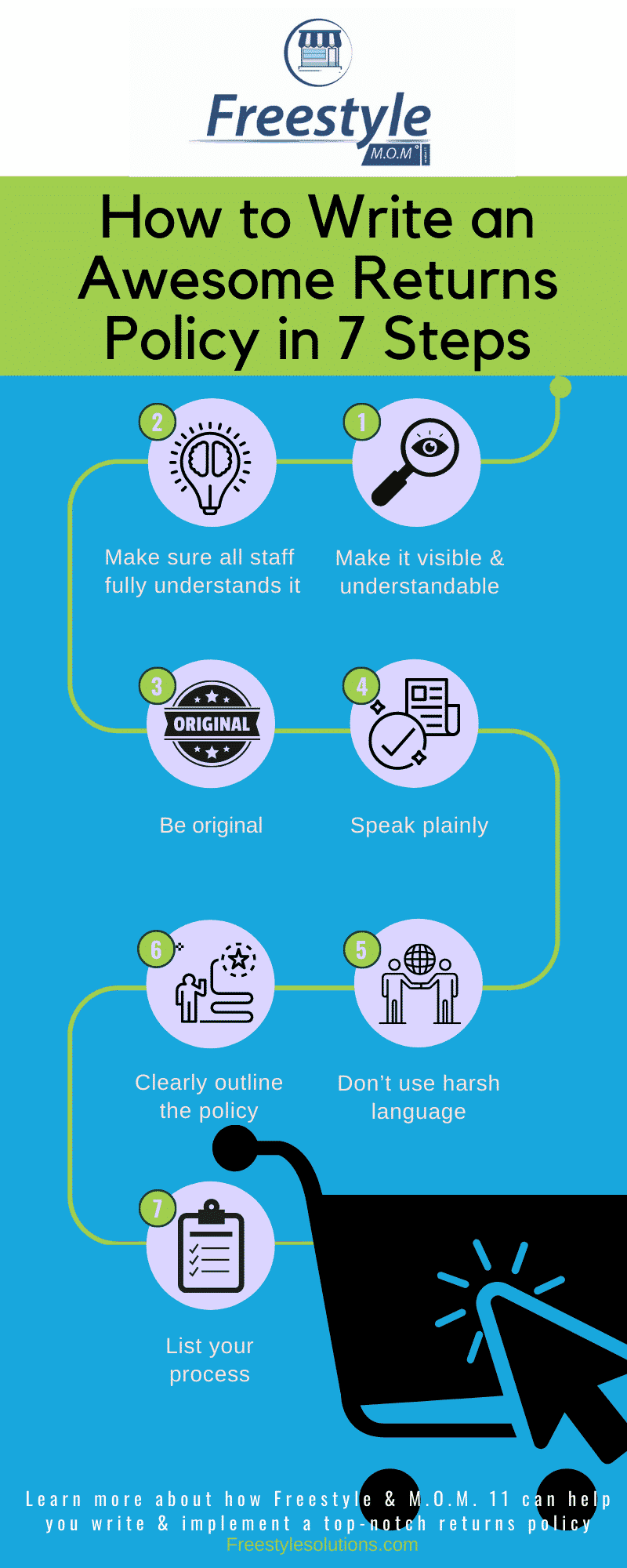 In the world of e-Commerce, everything changed in the last year. Brands saw an unprecedented uptick in digital sales as a result of the wild ride 2020-plus-a-global-pandemic set in motion.
In the world of e-Commerce, everything changed in the last year. Brands saw an unprecedented uptick in digital sales as a result of the wild ride 2020-plus-a-global-pandemic set in motion.
So what did we all realize? Perhaps more than anything else, it’s that with sales, comes returns. And managing those returns, we’re finding, can make or break you.
Simply put, to succeed, you must have a solid, reliable, reasonable, clear return policy to run your e-commerce efforts efficiently and effectively. Any functioning return policy needs to be:
- Established.
- In place.
- Visible.
- Competitive.
Why You Need a Return Policy
Consumers openly admit they decide who they’ll shop from, in part, based on who has the best/easiest return policies. One study shows that nearly half of all consumers check a return policy before they make a purchase.
Your return policy is your chance to soar past the competition, reduce internal headaches, save you potentially a lot of money and set clear expectations for your customers. Best of all, it’s not hard to create and implement a top-notch policy.
Not quite convinced? A 2019 UPS survey found that more than 70 percent of shoppers say their returns experience with a brand directly impacts the likelihood of them becoming a repeat customer. And that was before the pandemic resulted in the digital sales boom of 2020.
So, we’ve established: a great return policy can be powerful. And a great e-Commerce return policy can be a driving factor in creating those lifelong customers. It can instill both trust and confidence in a consumer’s perception of you as a brand.
Read on for everything you need to know about writing and promoting a return policy that customers will love.
How to Write an Awesome Returns Policy in 7 Steps
In just a few steps, you can create and implement a returns policy that your customers will appreciate. That means they’re more likely to reward you by confidently doing business with you.
- Make your returns policy visible and understandable – A clearly visible, easy-to-find policy on your site ensures that customers know what to expect ahead of time, eliminating potential future frustration when and if they need to return an item.
- Make sure your staff and employees all fully understand the policy – Mixed messages or inaccurate information can lead to unnecessary complications. If consumers don’t feel like your staff understands either your process or the actual policy itself, it can quell any chance of them making the purchase (or, worse yet, stop them from purchasing again). Make sure everyone on your team understands and can explain your return policy and procedure in detail.
- Be original – You do not want to copy and paste someone else’s return policy. Your business is unique to you, so make your return policy something that fits into your business model and makes sense. Flexibility is key, but you can’t risk offering something that would ultimately harm your business or brand in the long run.
- Speak plainly – Write a clear and concise policy that’s easy to understand at first glance. Optimize it if possible, using SEO-friendly, keyword-rich terms that’ll help you in the Search Engine Results Pages (SERPs).
- Don’t use harsh language – Try to avoid phrases that can be interpreted the wrong way or leave a bad taste in a customer’s mouth. It’s best to not say things like: you’re required to; you must; you can’t; we won’t; we’re not responsible for; etc.
- Clearly outline your policy to customers – What can they expect from you when they need to return an item? Do you offer store credit? Full return of their money? Exchanges? Will they have to pay for shipping to return?
- List your process – Answer any questions a customer trying to make a return may have.
*Explain the process (Do they start online? Email you?)
*How long do customers have to return an item (30 days? 45? One year?)
*Discuss packaging (Do they need their own? Original?)
*Share what else needs to be returned with the product (Packing slip? Email receipt? A returns confirmation email?)
*Cost to return (Do you pay for shipping? Does the customer? Do you take the shipping amount off their return price?)
Writing a great returns policy shouldn’t be hard. And the “return” on your investment might just be life-long customers who appreciate your clarity, flexibility and user-friendly policy.
Want to hear how M.O.M. can help you process returns? Reach out today to learn more about how Freestyle is helping brands manage increased returns in an age where eCommerce is booming, with no signs of slowing down.
Image courtesy of Pixabay | PhotoMIX-Company


![[POLL] Tell Us What You Think About Online Returns](https://www.freestylesolutions.com/wp-content/uploads/2024/05/returns-warehouse-500x383.jpg)

